Through our Trains.com website and the pages of Model Railroader magazine, you get a pretty good idea of what some of the hobby’s well-known names are working on. But not everything they do becomes an article for the website or magazine. In “What are you working on?” I surveyed some of our regular contributors to learn about their latest projects. Trains.com Director David Popp and I also joined in the fun to share what we’ve been working on recently.
Cody Grivno, Senior Editor, Model Railroader
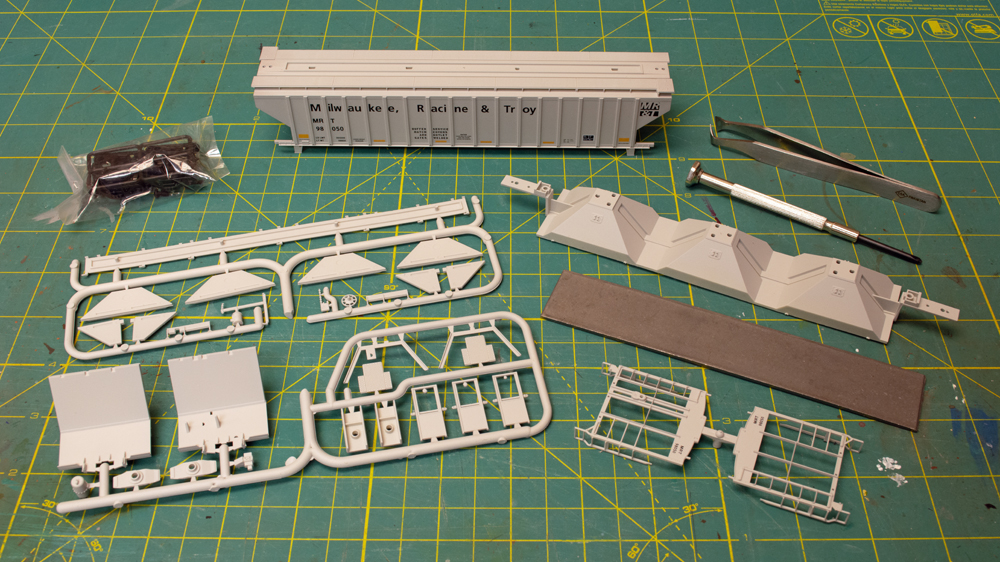
A relatively new facet of my job is working with our eCommerce team, designers, and model railroad manufacturers to develop custom-decorated Milwaukee, Racine & Troy models for the Kalmbach Hobby Store. When new kits come in, it’s my job to build and photograph them so we can put images of production models on the website.
Recently, we received the Pullman-Standard 4,750-cubic-foot capacity three-bay covered hopper from Accurail. The model depicts a covered hopper that has been reassigned for use as a buffer car. The kit features yellow FRA-224 stripes is stenciled “Buffer Service Hatch Covers and Outlet Gates Welded.”
The PS 4750 covered hopper has been part of the Accurail lineup since 2014. You can read my review of the kit on Trains.com.
Thomas Klimoski, author, Building the Right-Sized Layout
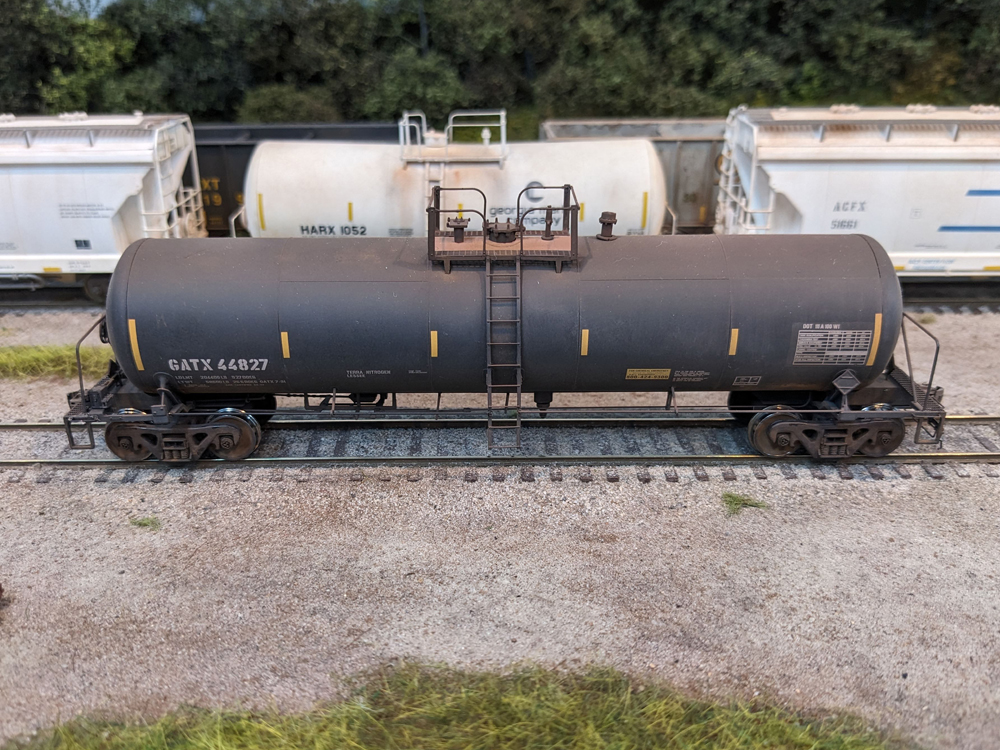
As I was building my HO scale Georgia Northeastern, I focused on detailing and getting my layout to a consistent appearance with scenery and structures, while other projects went on the back burner. Once I achieved that goal, I went back and recently added interior and exterior lights to structures. The lighting isn’t necessary for operations, but does add a cool factor to the layout, plus it allows guests to see some of the buildings that have detailed interiors now that the structure has lights inside.
I’ve also been working on some weathering projects for my freight car fleet. During a recent operating session, I noticed that I had not weathered many cars. The new, out-of-the-box appearance detracted from the rest of the cars on the layout that were weathered. My most recent weathering project was a General American tank car in lease service. I wanted to fade the car and give it a slightly rusted appearance on the top, similar to what I’ve seen on many prototype tank cars. The steps and techniques I used will be covered in an upcoming Model Railroader article.
Tony Koester, Editor, Model Railroad Planning
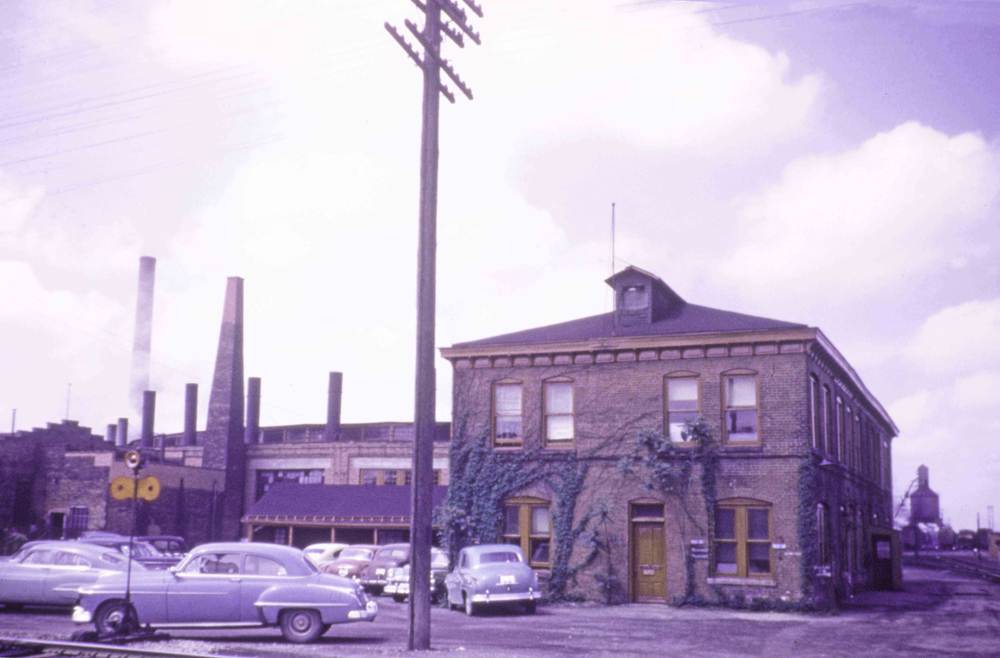
I’m often asked how I choose a base structure to use in a kitbashing project. Since most such projects involve brick buildings — it’s often easier to scratchbuild a wood structure — and hence plastic walls, I tell them the key thing to look for is the shape of the windows. It will be very difficult to modify a bunch of windows, so I page through the Walthers catalog looking for a structure kit that has windows close to those evident on the prototype building I want to model.
A good, but admittedly somewhat extreme, example of this is the Nickel Plate Road’s superintendent/dispatchers’ office in Frankfort, Ind. The most distinguishing characteristic of this building was a series of triple windows. I had a Walthers Merchants Row III building on my railroad, and that jogged my memory. Sure enough, it had one triple window. Alas, the prototype had nine.
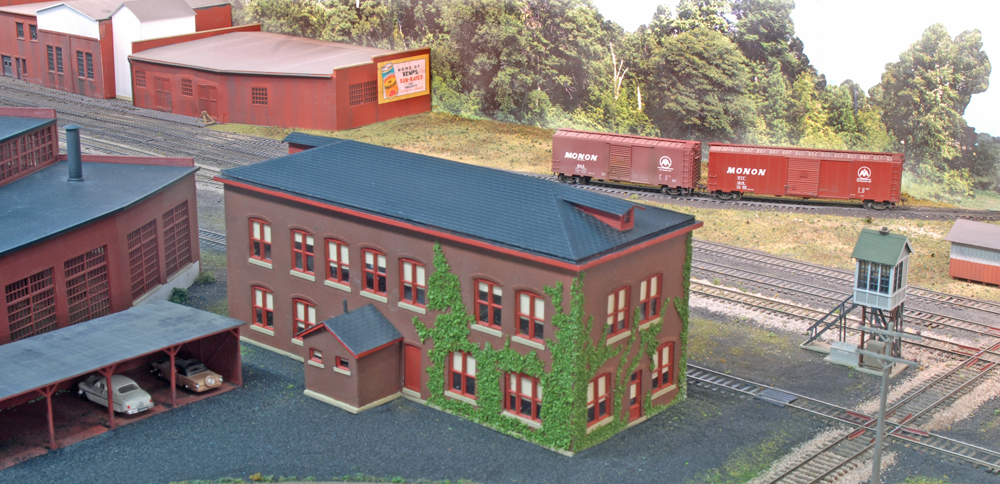
I acquired an unbuilt kit and made photocopies of the sides. It quickly became clear I needed three kits to have enough walls to make even a slightly truncated version of this office. That would give me three windows, still short of the five I’d need. Enter Texan Greg Johnson, who volunteered to laser-cut the windows for me. I sent him one as a sample, he cut more than I needed, and they worked perfectly!
The building was partially covered with vines, which helped to hide some of the splice joints. It was a rather straight-forward kitbashing project, thanks to finding donor kits that had windows of the needed shapes.
Gerry Leone, Contributing Editor, Trains.com Video
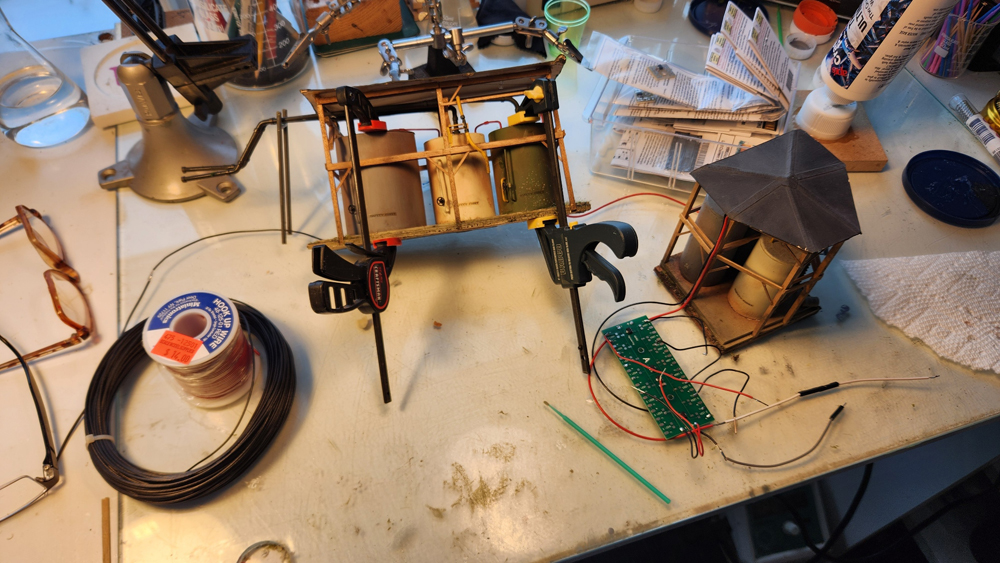
Spaces to Places viewers can watch me install a yard lead for my classification yard on Trains.com Video. But once that project is finished, I’ll add some scenery to the upper deck. Then the series returns to the lower deck as I finish off the classification yard itself, including installing locally served industries.
When I began the Bona Vista 5, I promised myself I’d add interior lighting to every structure and I’m keeping that promise. What’s currently on my workbench is the chemical tank portion of Wesolowski Chemical Co., an industry adjacent to the classification yard and served by the yard switcher. I’m adding lights plus doing a bit of repair work to this 40-year-old scratchbuilt structure that’s appeared on the previous four iterations of the Bona Vista RR.
Lance Mindheim, Owner, The Shelf Layouts Co.
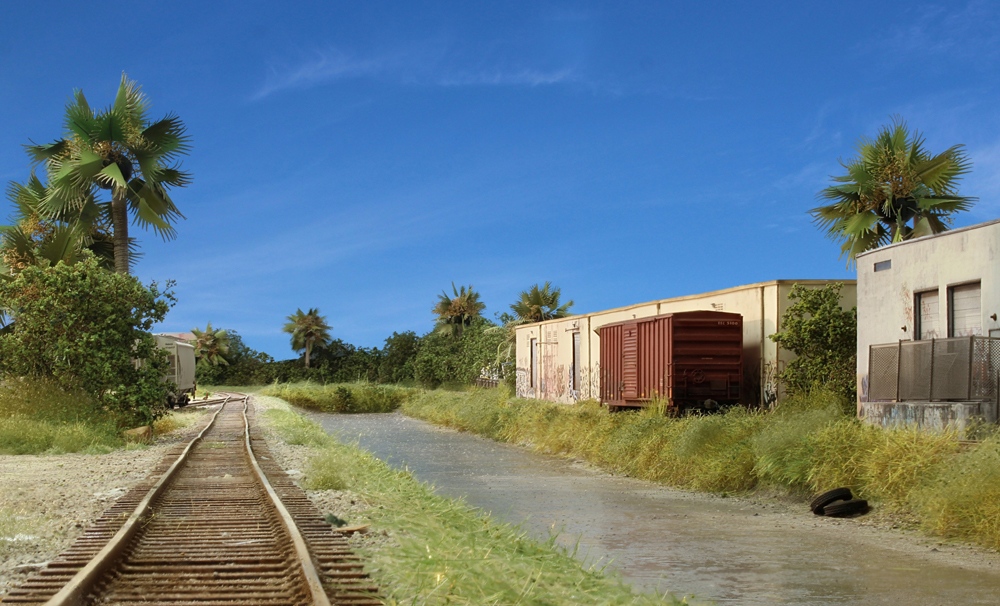
It’s a sort of crazy project but I’m having a lot of fun with it. I’m building a replica of an old layout. More than 15 years ago I built my first HO scale Miami-themed layout, sort of as a proof of concept. It was a small switching layout called East Rail, featured in Great Model Railroads 2008. After a few years I felt it had served its purposed and I sold it to a modeler in Indiana.
Over time I regretted the decision to get rid of it. At one point I considered buying it back and driving out to Indiana to go get it. It occurred to me that it would be cheaper and easier to just make a copy of it since it wasn’t that big. Besides, I’d learned a few things since then and felt I could do a slightly better job the second go around. So it came to be. East Rail 2 was born and is close to being finished.
David Popp, Director, Trains.com
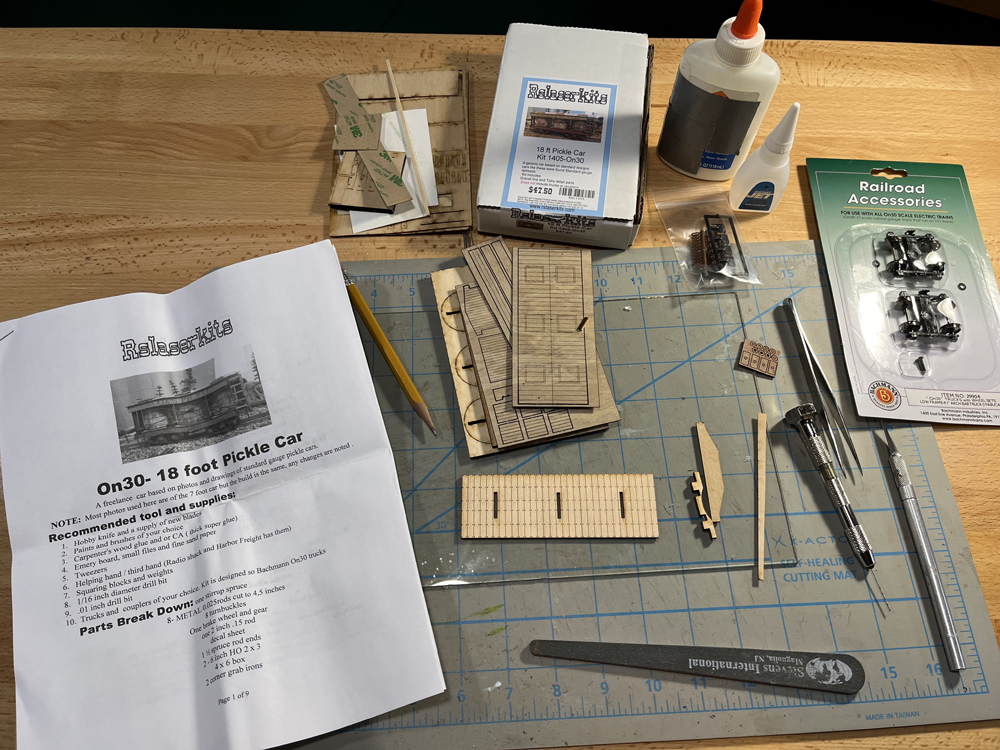
After getting the kit last summer, I’m finally getting started on the On30 18-foot pickle car from RS Laser Kits. Does my Olympia railroad need a pickle car? Not really, but the model is totally cool, so I had to have one. Besides, for all the years of working on my On30 layout, I have yet to build any rolling stock from wood kits. In addition to the wood kit, I needed to pick up a set of Bachmann trucks and some Kadee couplers. I’ll cover some of the construction of this model in the Olympia video series, as well as write a review of the product for Trains.com. The car may be small, but it has a lot of parts to it, so it may be a bit before you get to see the finished model!
Seth Puffer, Model Railroader and Trains.com Video contributor
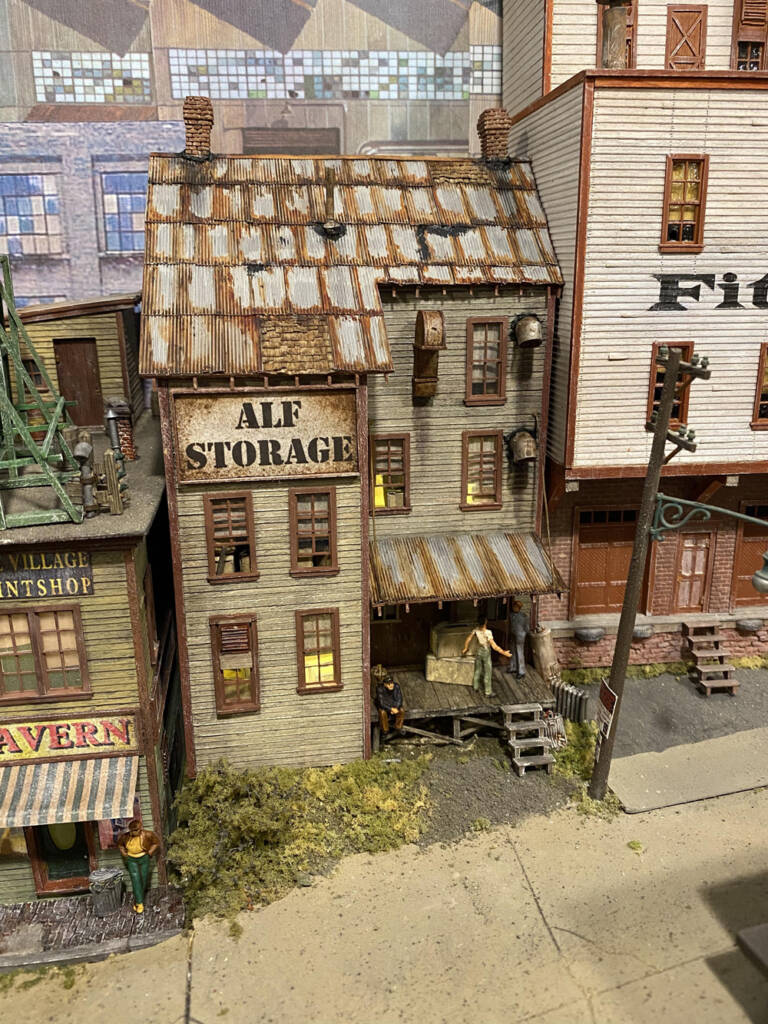
I’ve had a number of projects on the workbench the last couple of months. My favorite Alf Storage, a scratchbuilt structure that replaced a larger brick building of the same name. The structure is based on a similar building on George Sellios’ HO scale Franklin & South Manchester. I used Northeastern Scale Lumber uneven clapboard for the siding. Then I added plastic and metal window castings, vents, stacks, and chimneys. I used corrugated metal sheets for the roofing.
As with other structures on my Puffer Bridge Lines layout, Alf Storage is thoroughly weathered. I completed the building with a couple of Preiser figures and light-emitting-diode interior lighting.
M.R. Snell, Model Railroader contributor
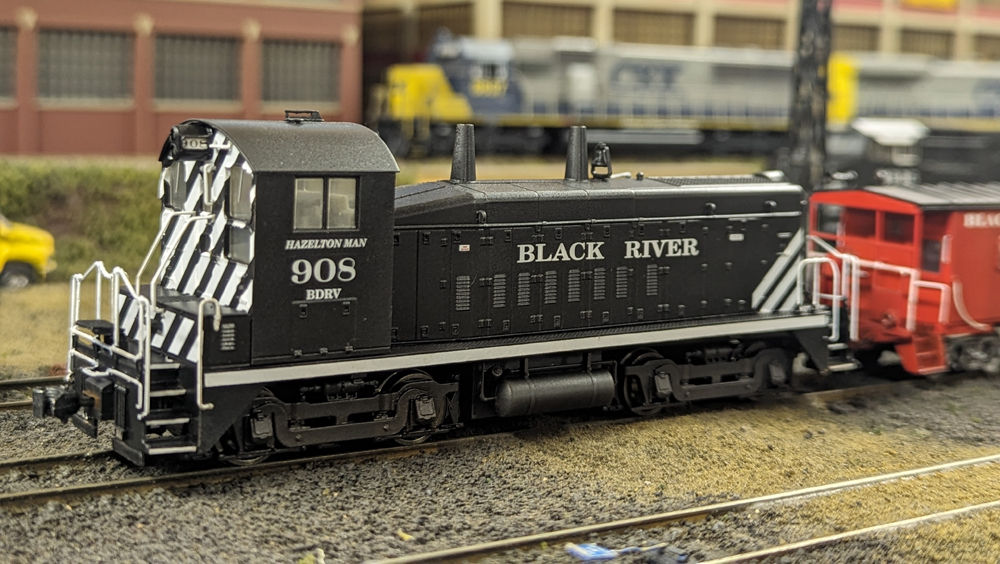
In the 1:1 world, the Delaware & Raritan River RR (DRR) has taken over operations on some New Jersey freight routes. Since the railroad is doing its interchange with Conrail Shared Assets via New Jersey Transit at Red Bank, N.J., I saw an opportunity to add some older diesels to my layout as the DRR also uses power from sister Chesapeake & Delaware LLC railroad Black River & Western (BRW). The BRW is a freight and tourist line.
Using a little modeler’s license, I’m moving the interchange to the now unused MU Yard in South Amboy, N.J. I’m working on a BRW end-cab switcher and bay-window caboose (now a shoving platform) to serve the interchange.
When I’m not modeling, I’m keeping busy with prototype photography. My current areas of focus are the CSX heritage units, the upcoming CPKC Final Spike tour, and several pieces of full-size equipment relative to my HO scale interests.
Pelle Søeborg, Contributing Editor, Model Railroader
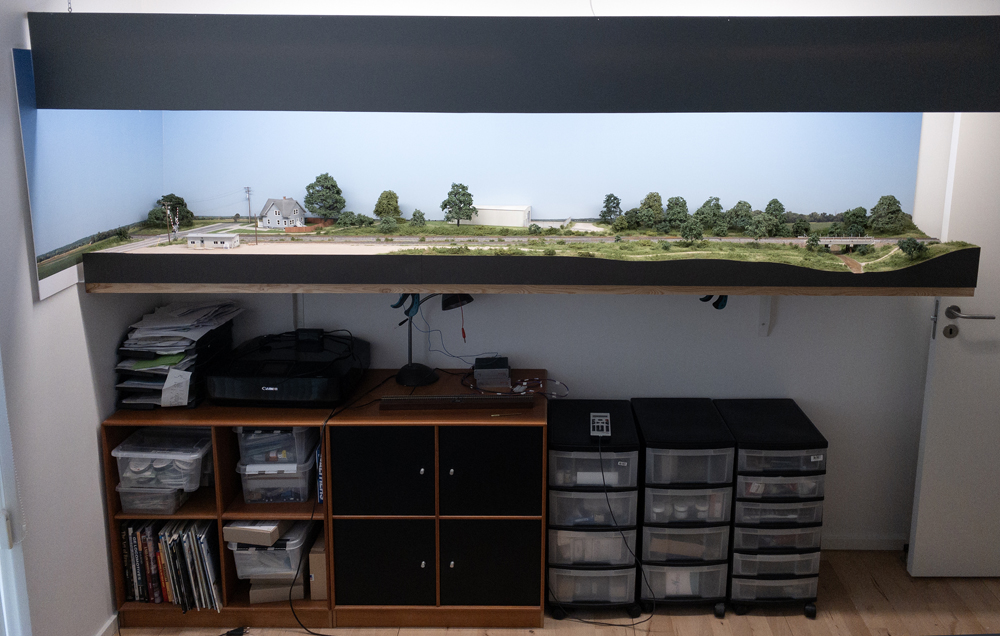
This winter I’ve been building two-and-a-half HO scale modules built to FREMO-US (the European version of Free-mo) standards. The total size of the scene shown above is 1’-6” x 8’-0”. Because my model railroading space is restricted, this is all I have room for.
A bridge scene, which you can read about in the May 2024 issue of MR, takes up about half of the space. Other highlights include an active grade crossing, a house, a warehouse, and a railroad office. A switch just before the bridge serves a siding for storing maintenance-of-way equipment and bad-order cars. Photo backdrops make the shallow scene feel much deeper.
I still need to add a few more details and do some touch-up work before I can declare the project finished.






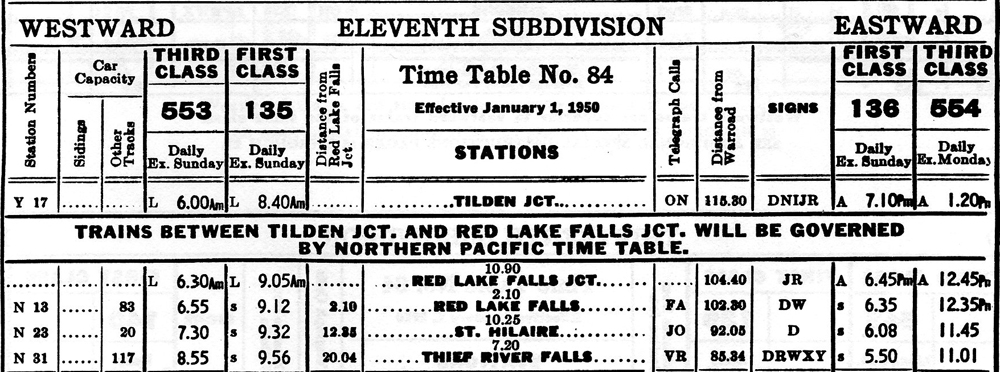


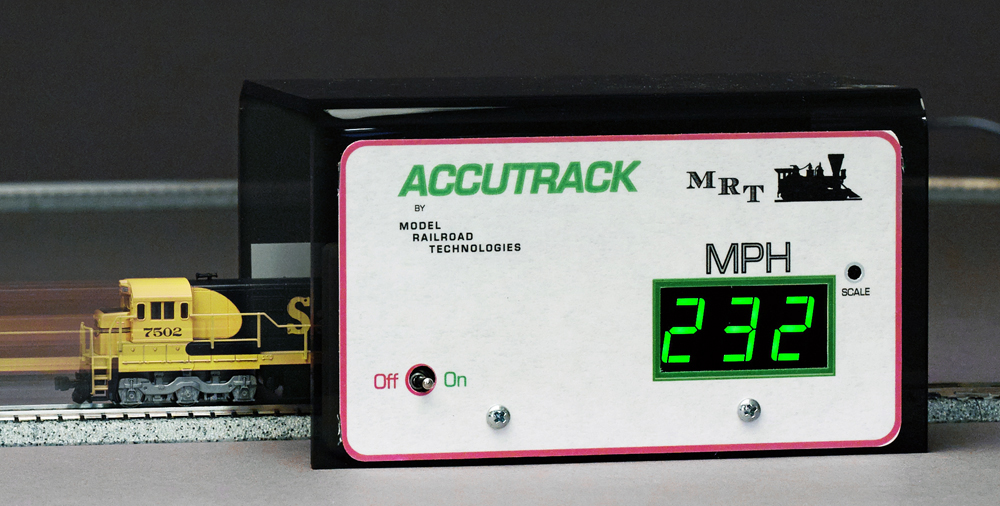




What am I working on? This close to retirement….mostly keeping my sanity….
This is for David Popp, one of the reasons I still read MRR-I’ve been an On30 modeler building my version of Maine 2-footers for the past 20 years. Since you are at the point of building wood kits for your layout, might I suggest this one:http://www.deerfieldriverlaser.com/DRL-O-M06.html an easy build on a Bachmann On30 frame, and this one really looks great. Just a suggestion…….don’t laugh when I tell you I have already built about 10 of these kits, and I’m one of those guys with about 10 other manufacturers wood kits sitting on the shelf waiting for my retired butt to kick into gear and get back to building. I so love modeling in On30-I can actually see what the heck I’m doing! Keep up the narrow gauge coverage in MRR and I’ll keep subscribing. John Tumolo britcarfan@aol.com